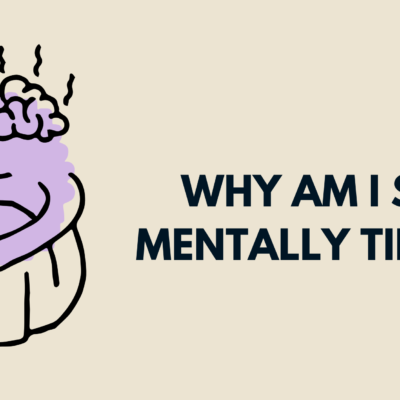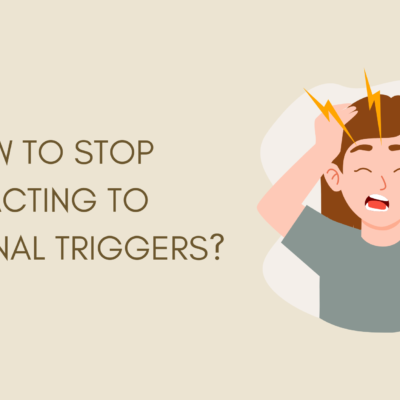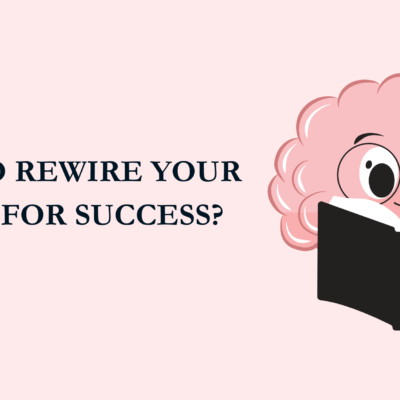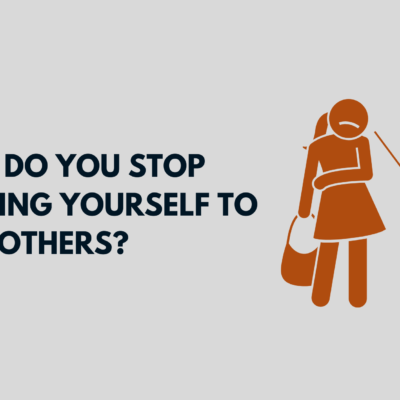How to Help with Anxiety and Overthinking: Anxiety and overthinking are two of the most common struggles in today’s fast-paced, demanding world. Whether it’s a racing heart before a presentation, sleepless nights spent reliving conversations, or an endless cycle of “what ifs,” anxiety and overthinking can interfere with daily life, damage self-esteem, and create a feeling of being mentally trapped.
The good news is: anxiety and overthinking are manageable. With the right tools, support, and lifestyle changes, you can train your mind to slow down, be more present, and respond with clarity instead of panic.
This article offers a comprehensive guide to understanding anxiety and overthinking—what they are, how they affect you, and most importantly, how to deal with them effectively.
Also Read:
What Is Anxiety?
Anxiety is your body’s natural response to stress, fear, or uncertainty. It’s the feeling of worry, nervousness, or dread about something that may or may not happen.
Common symptoms of anxiety include:
- Rapid heartbeat
- Trouble sleeping
- Sweating or trembling
- Racing thoughts
- Restlessness
- Difficulty concentrating
- Avoidance behaviors
Some people experience mild anxiety occasionally, while others face chronic anxiety disorders like Generalized Anxiety Disorder (GAD), panic disorder, or social anxiety.
What Is Overthinking?
Overthinking is a mental pattern of excessive and repetitive thoughts, often about the past or the future. While some reflection is normal, overthinking becomes harmful when it:
- Causes emotional distress
- Delays decision-making
- Prevents action
- Fuels anxiety and self-doubt
Common signs of overthinking:
- Replaying conversations or events repeatedly
- Imagining worst-case scenarios
- Constantly questioning decisions
- Struggling to “shut off” your mind at night
Together, anxiety and overthinking create a loop: anxiety fuels overthinking, and overthinking intensifies anxiety.
Step 1: Recognize the Patterns
Awareness is the first and most crucial step in breaking the cycle of anxiety and overthinking.
Start noticing:
- When you feel most anxious or start overthinking (e.g., at night, after conflict, before big decisions)
- What triggers your thoughts (e.g., criticism, uncertainty, fear of failure)
- How it affects your body (tight chest, racing heart, fatigue)
You can track this through:
- Journaling
- Mood tracking apps
- Voice notes or thought logs
The goal isn’t to judge yourself—it’s to observe without attachment, like a scientist studying a pattern.
Step 2: Challenge Your Thoughts
Most overthinking is fueled by irrational fears, exaggerated assumptions, or past wounds. When a thought feels overwhelming, ask yourself:
- Is this thought fact or assumption?
- What’s the worst-case scenario? Could I survive it?
- Have I been in a similar situation before, and did it turn out as bad as I feared?
- Am I trying to control something I cannot control?
This is called cognitive restructuring—a core part of Cognitive Behavioral Therapy (CBT). It helps you slow down your thoughts and respond rationally instead of emotionally.
Step 3: Practice Grounding Techniques
When anxiety kicks in, your body enters fight-or-flight mode. To stop overthinking and calm anxiety, you need to bring your focus back to the present.
Here are powerful grounding techniques:
The 5-4-3-2-1 Technique:
- 5 things you see
- 4 things you can touch
- 3 things you hear
- 2 things you can smell
- 1 thing you can taste
Other Grounding Tools:
- Holding ice cubes in your hands
- Deep belly breathing (inhale 4, hold 4, exhale 6)
- Walking barefoot on grass or natural surfaces
- Naming objects around you to stay present
These techniques help shift your focus from thoughts to senses.
Step 4: Write It Out
Journaling helps you release mental clutter and gain perspective. When thoughts are swirling, write them down without editing or judging.
Try these journaling prompts:
- “What am I worried about right now?”
- “Is this problem something I can solve or something I need to let go of?”
- “If I were advising a friend in this situation, what would I say?”
- “What’s one thing I do have control over right now?”
Even 5–10 minutes of writing a day can help reduce overthinking and organize your thoughts.
Step 5: Move Your Body
Exercise is one of the most effective (and underrated) ways to manage anxiety and reduce mental overactivity.
Why it works:
- Releases feel-good chemicals (endorphins)
- Burns off nervous energy
- Regulates sleep
- Shifts focus from mind to body
You don’t need intense workouts. Try:
- A 20-minute walk
- Yoga or stretching
- Dancing to your favorite song
- Swimming or cycling
- Even 10 jumping jacks when you feel anxious
Consistency is more important than intensity.
Step 6: Limit Information Overload
We live in an age of constant notifications, endless news, and social comparison. This digital overwhelm feeds anxiety and overthinking.
Set digital boundaries:
- Turn off non-essential notifications
- Unfollow or mute accounts that trigger comparison or stress
- Avoid doomscrolling or late-night news
- Use the “Do Not Disturb” mode during high-stress hours
Schedule “no-screen” times—especially before bed—to protect your mind from unnecessary input.
Step 7: Talk It Out
Sometimes, the best way to stop overthinking is to get out of your own head. Talk to someone you trust:
- A friend
- A family member
- A mentor
- A therapist
Speaking aloud often makes worries feel less intense and more manageable. You may even realize that the thought loop in your head isn’t as logical as it seemed.
If you’re not ready to talk to someone, record voice notes for yourself. Hearing your own voice can offer surprising clarity.
Step 8: Set Boundaries with Your Mind
It’s okay to think about your problems. It’s not okay to obsess over them for hours.
Try “Worry Time”: set a timer for 15–20 minutes a day where you allow yourself to worry or overthink freely. Write it out or think it through.
Once the timer ends, redirect your focus. Tell your mind:
“You’ll get your turn again tomorrow. For now, I’m done.”
This teaches your brain that rumination has limits, reducing its power over time.
Step 9: Create a Calming Environment
Your surroundings affect your inner world more than you may realize. Declutter your space, create calming rituals, and build an environment that promotes peace.
Suggestions:
- Use calming scents like lavender or sandalwood
- Play soft instrumental or nature sounds
- Keep your space tidy and cozy
- Use dim lighting at night
- Keep a warm drink like chamomile tea nearby
A calming outer space supports a calm inner space.
Step 10: Practice Self-Compassion
Anxious overthinkers often beat themselves up for not being calm, for thinking too much, or for “being weak.” This only adds fuel to the fire.
Instead, practice gentle inner dialogue:
- “It’s okay to feel overwhelmed. I’m human.”
- “I’m doing my best with what I know right now.”
- “My mind is trying to protect me—it just needs some guidance.”
Over time, self-compassion reduces the shame around anxiety and allows healing to begin.
When to Seek Professional Help
If anxiety or overthinking is affecting your:
- Sleep
- Work
- Relationships
- Physical health
- Self-worth
…it may be time to talk to a mental health professional.
Therapies like CBT, EMDR, and mindfulness-based therapy are highly effective in treating anxiety disorders and overthinking patterns.
Don’t wait for things to get worse. Asking for help is a sign of strength—not weakness.
Final Words: Calming the Storm Within
Anxiety and overthinking may seem like enemies, but in truth, they’re signals from your mind saying:
“Something matters to me. I want to feel safe.”
Your job isn’t to shut them down, but to listen kindly, respond wisely, and gently redirect your mind toward peace.
You are not your thoughts. You are the awareness behind them. With patience, practice, and the right tools, you can calm your racing mind and find clarity in the chaos.






